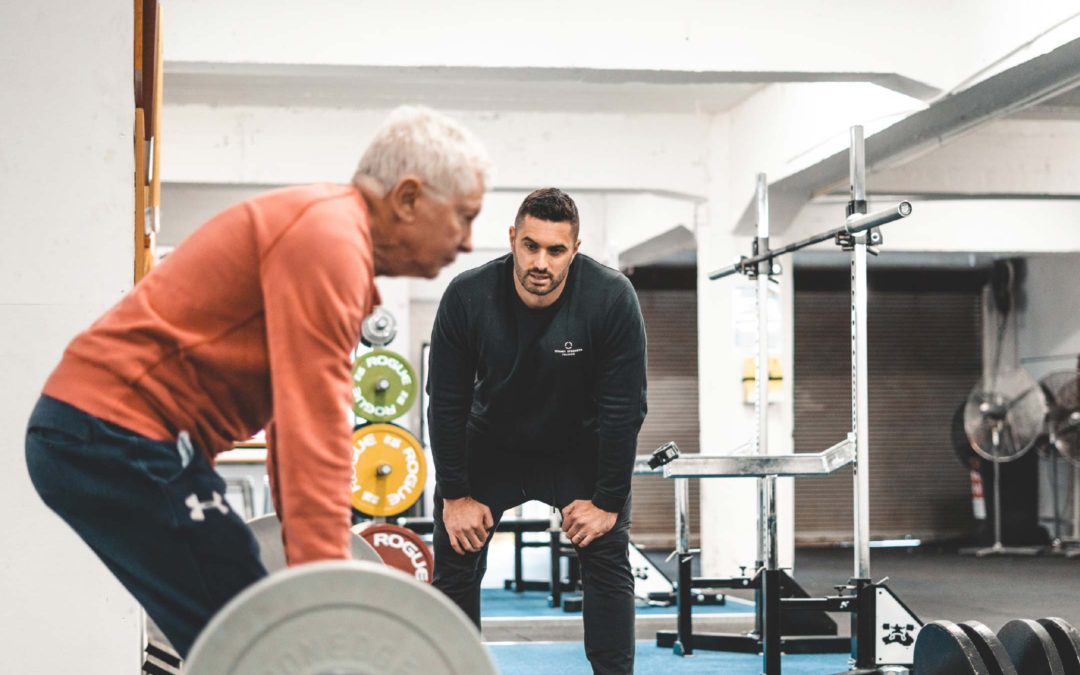At Hobart Strength Training we focus on getting people stronger of for life. Inevitably, we get asked about flexibility and whether or not it matters. There’s plenty of information out there, but we’d argue it tends to stretch the truth. The truth is flexibility by itself probably doesn’t matter for your health! So, should we worry about flexibility at all then? We’d argue “no”. Why? Well, today we’ll unpack what flexibility is, if it’s actually necessary and how by strength training, you’ll most likely develop all the flexibility you need to improve your quality of life. So, pull up a chair and get ready to stretch the current limits of your understanding (okay, we promise we’ll stop with the puns!)
What is flexibility?
Flexibility can be defined as follows: the anatomical range of movement in a joint or series of joints, and length in muscles that cross the joints to facilitate a bending movement or motion. Flexibility varies between individuals, particularly in terms of differences in muscle length of multi-joint muscles. This is mainly due to genetic factors (1) but importantly, activity levels. When people think about flexibility they usually think about “static” or “passive” flexibility. An example of this would be reaching down to touch your toes and holding that stretch. Training flexibility usually involves moving into a stretch and holding that position for a period of time. You will then rest momentarily before moving back into that position. Lastly, frequency and exposure influences flexibility. When those ranges of motions are ignored, people tend to “lose” flexibility. The phrase “use it or lose it” is pertinent here.
Is it necessary to stretch?
As mentioned in the introduction, we don’t advise going out of your way to stretch. Instead, we advocate for including both resistance training and conditioning (cardio), which can indirectly enhance your flexibility without the need for specific flexibility training. For instance, when you extend your left arm and gently pull your fingers downward using your right hand, you’ll experience a sensation similar to a biceps curl’s bottom position. This “stretch” is a normal portion of fundamental human movement. Long story short, being active gets you stretching incidentally! Furthermore, the commonly cited benefits of injury prevention and sports performance associated with stretching have been debunked by research (2, 3). In summary, prioritizing strength and heart health in your training regimen is likely to contribute to improved flexibility. Building overall fitness not only makes you more resistant to injury but also enhances your performance.
Focus on a good return on investment
At Hobart Strength Training, we prioritize your time. You probably already perform squats, bend over to pick up items from the floor, and reach overhead regularly. Additionally, if you engage in activities like walking, swimming, running, or cycling, you’re actively maintaining your ability to move freely whilst working on cardiovascular fitness. So, instead of viewing flexibility as a separate quality to train, consider it as the ability to move your body effectively. However, if you enjoy static stretching, feel free to incorporate it into your routine! We always encourage individuals to stay active in any way they prefer. If you’re seeking guidance on optimizing your time for maximum health benefits, don’t hesitate to reach out to us. We’re here to help you embark on a journey towards a stronger and healthier you for life.
References:
- The COL5A1 gene: a novel marker of endurance running performance – PubMed (nih.gov)
- A systematic review into the efficacy of static stretching as part of a warm-up for the prevention of exercise-related injury – PubMed (nih.gov)
- The Case for Retiring Flexibility as a Major Component of Physical Fitness – PubMed (nih.gov)

